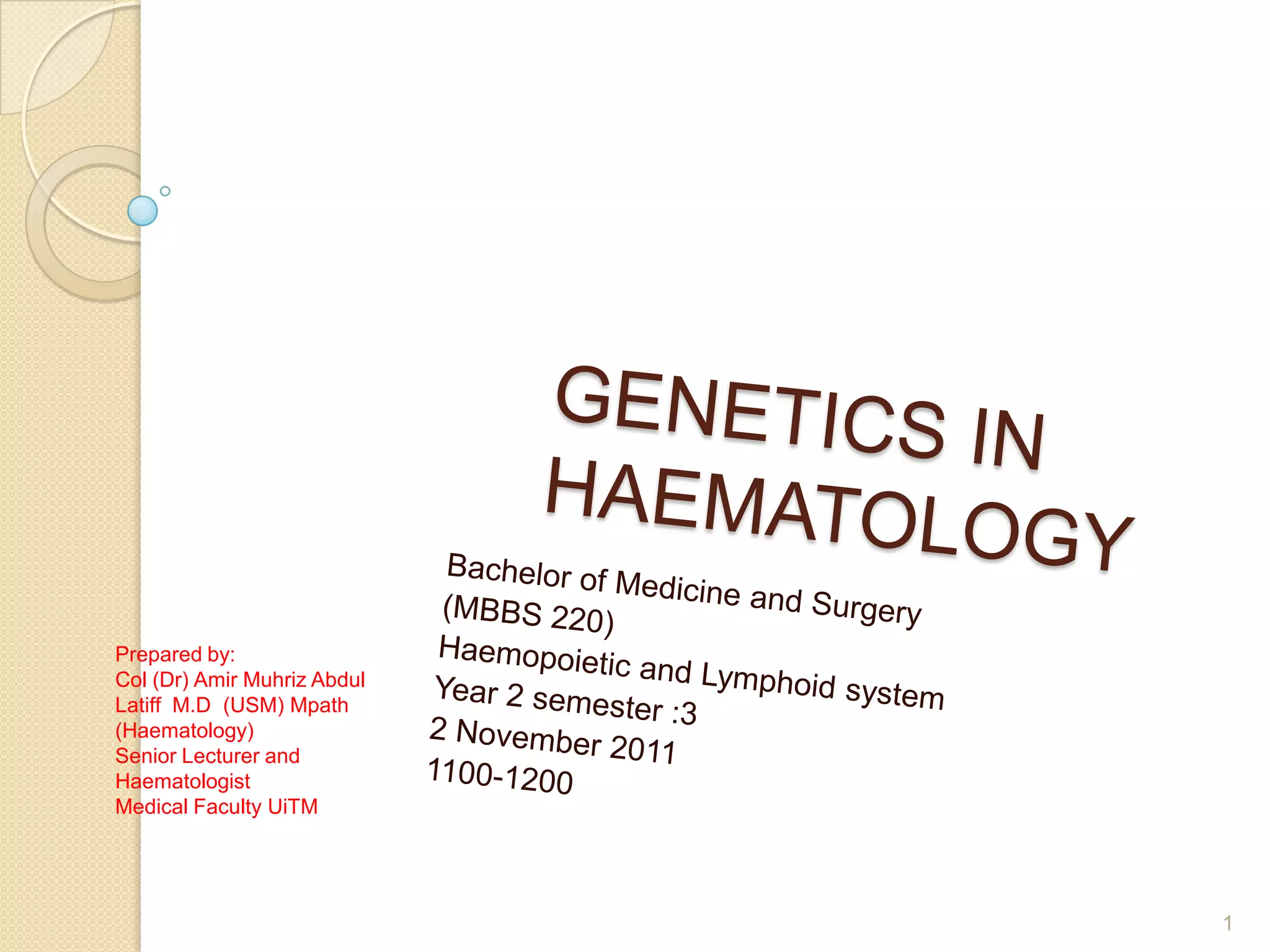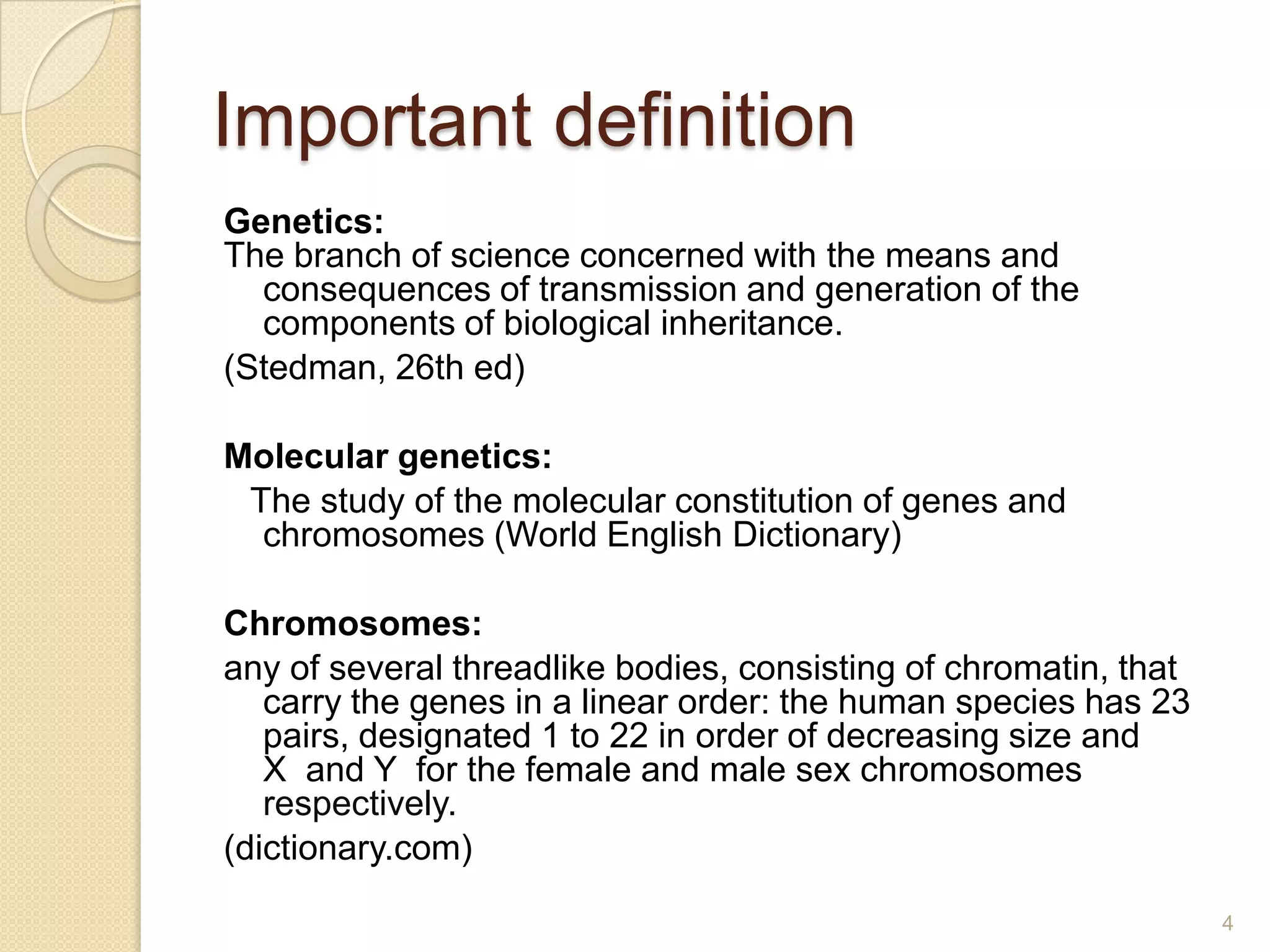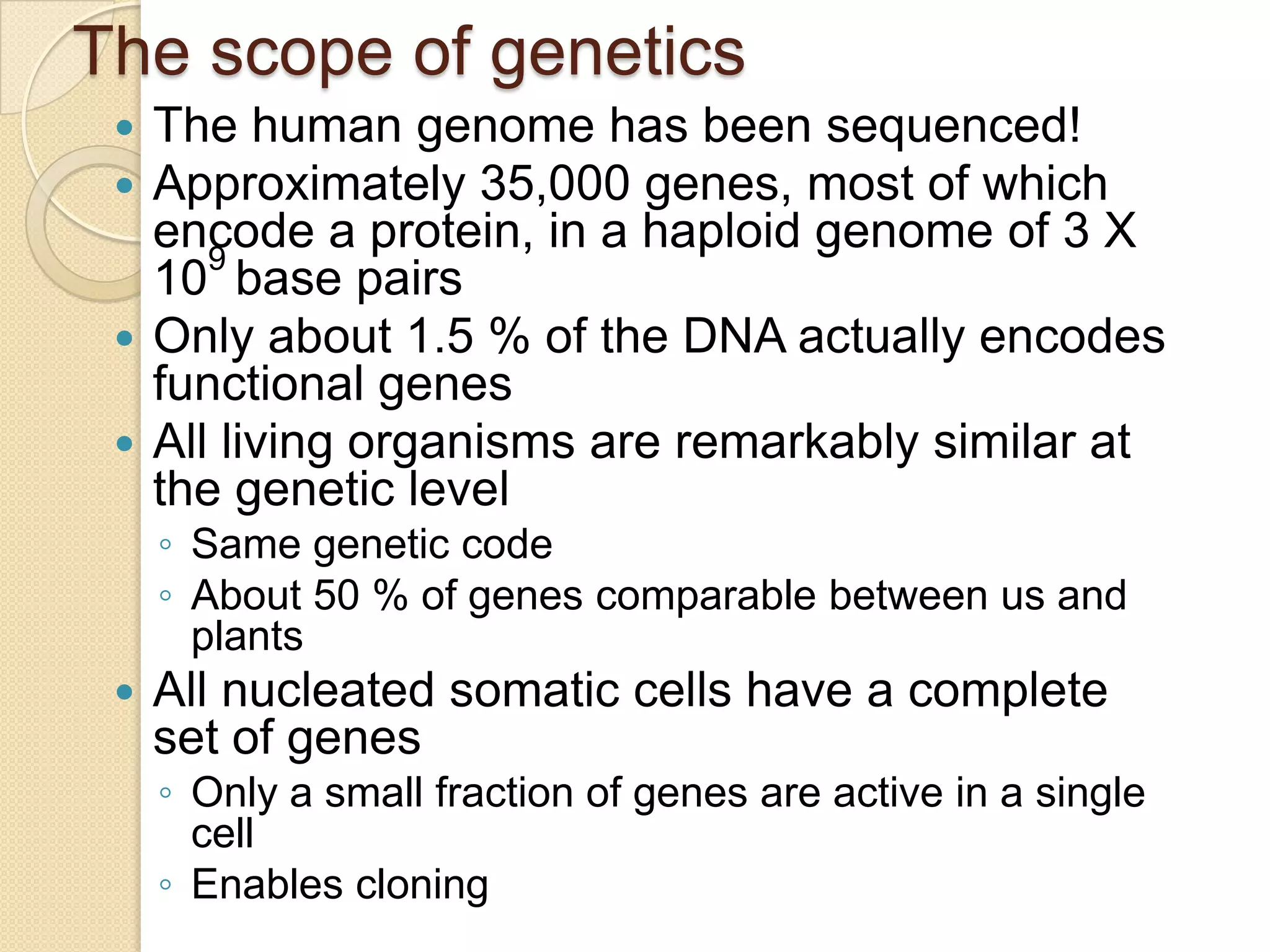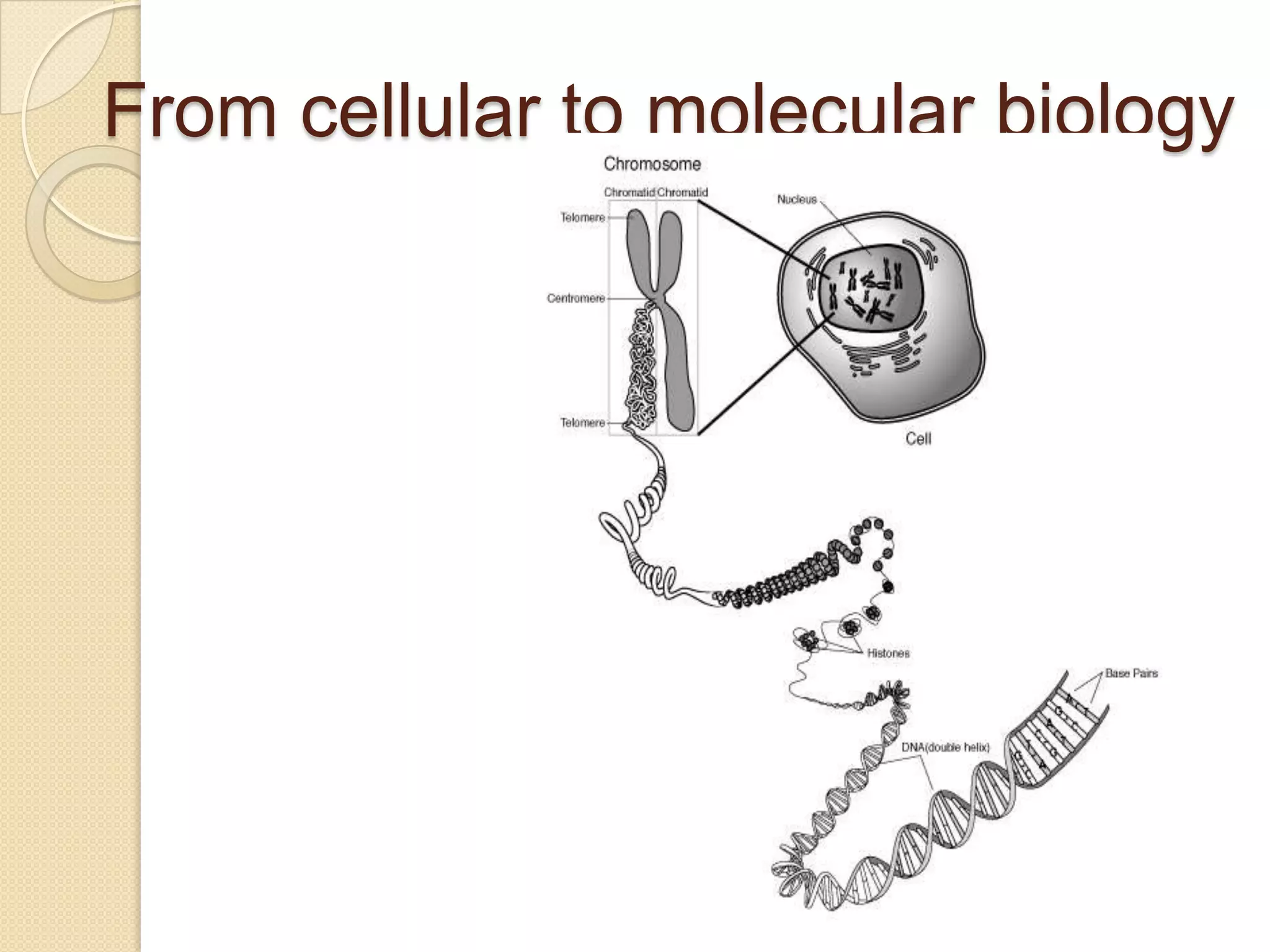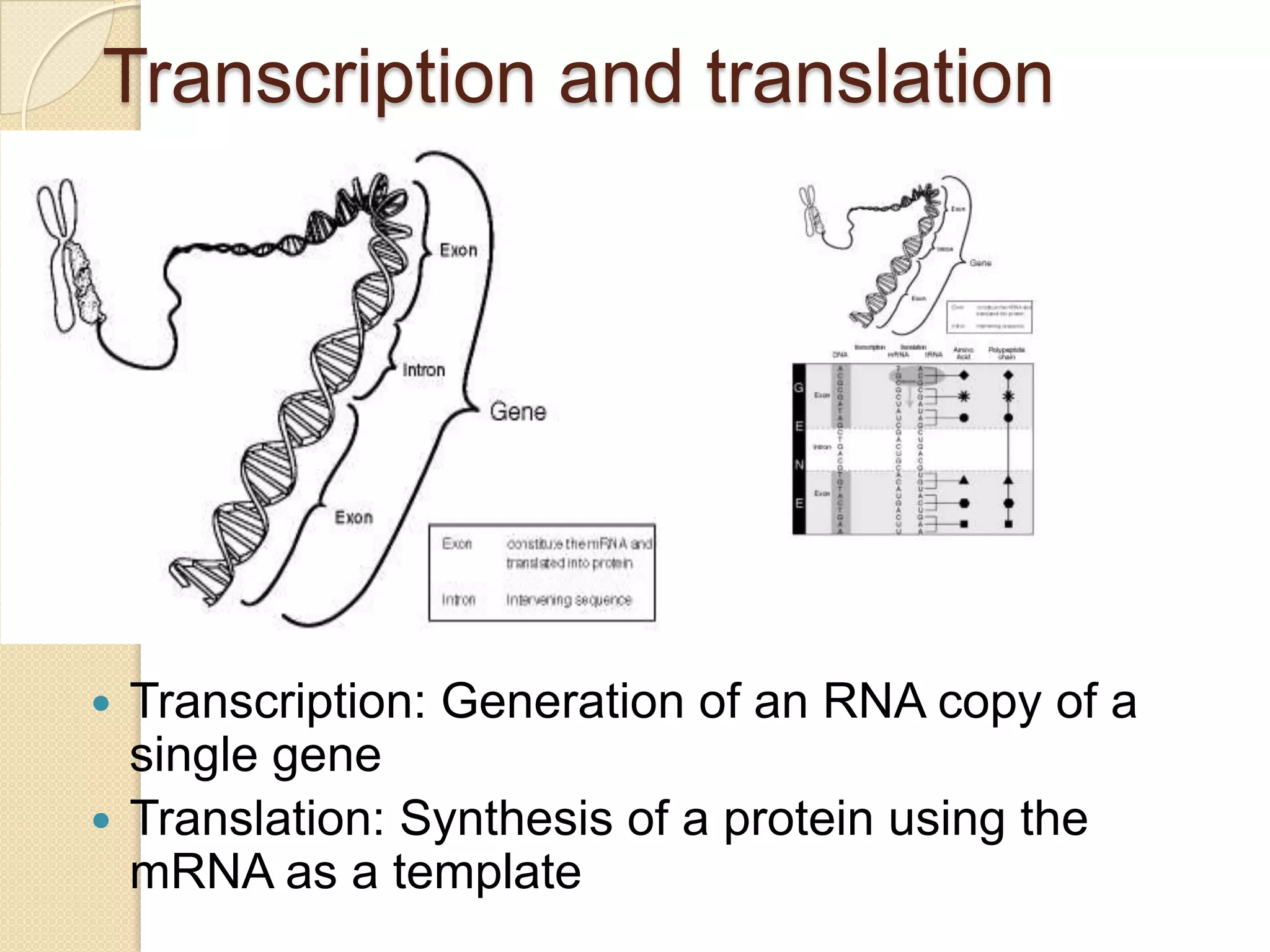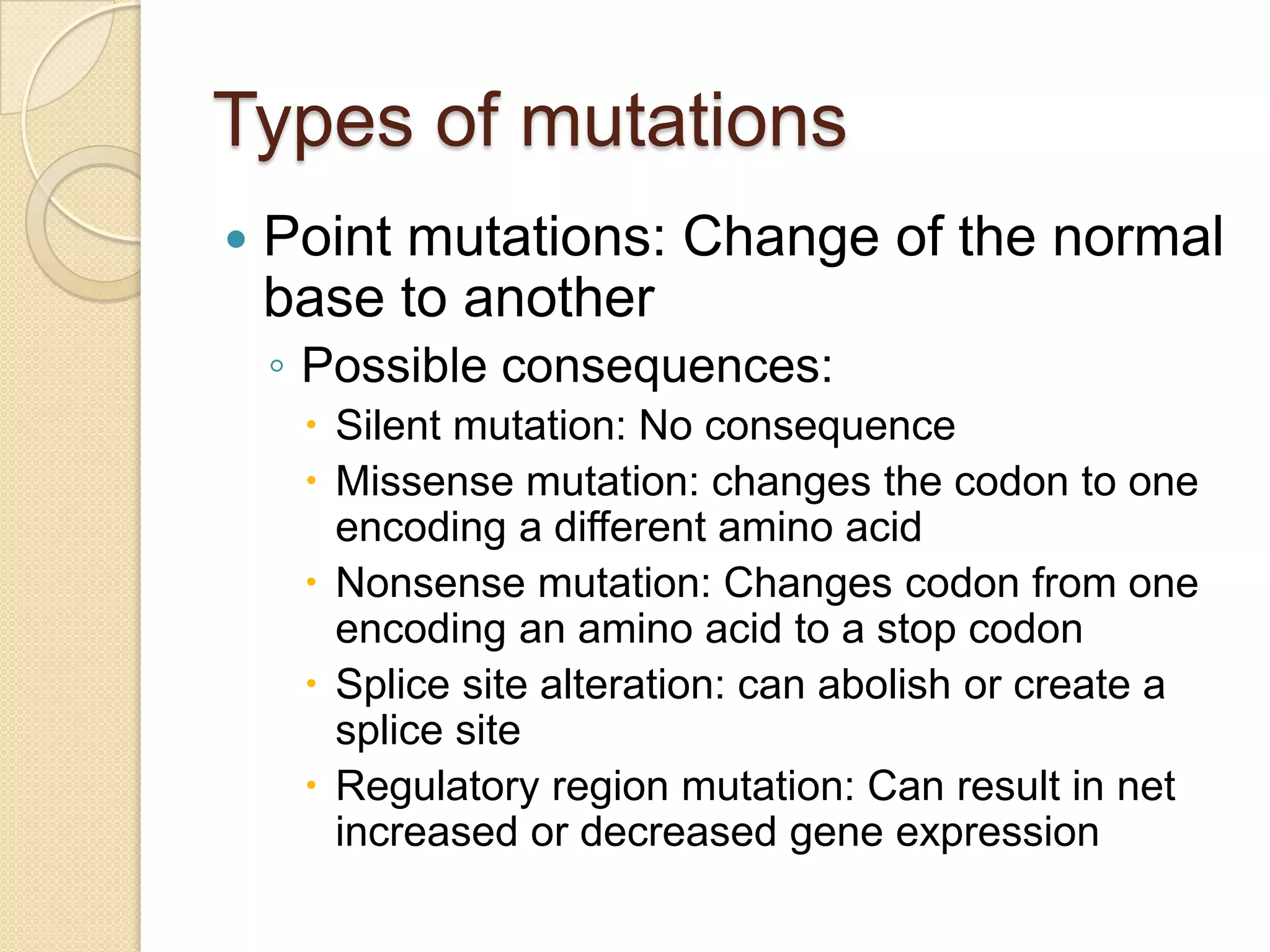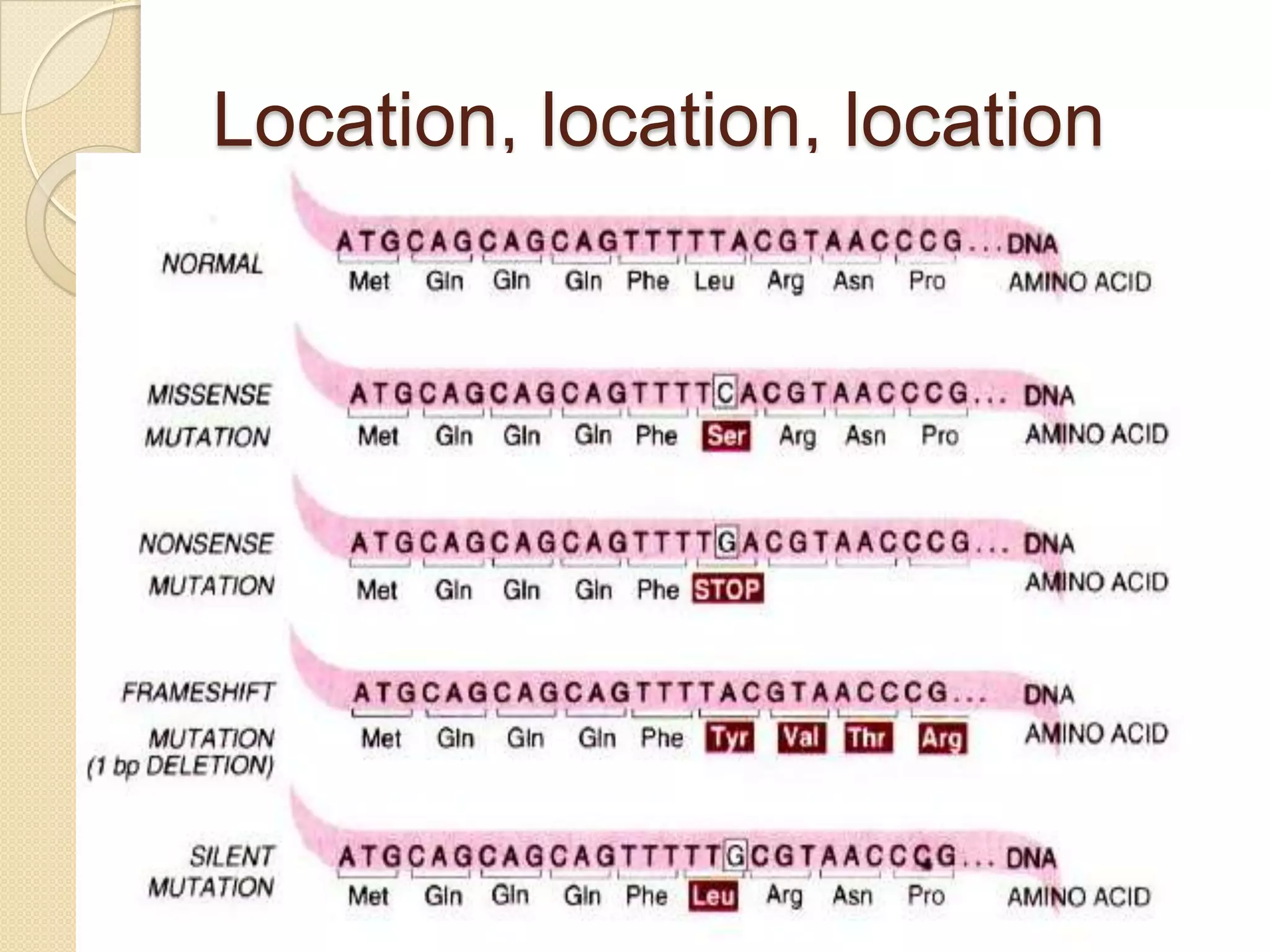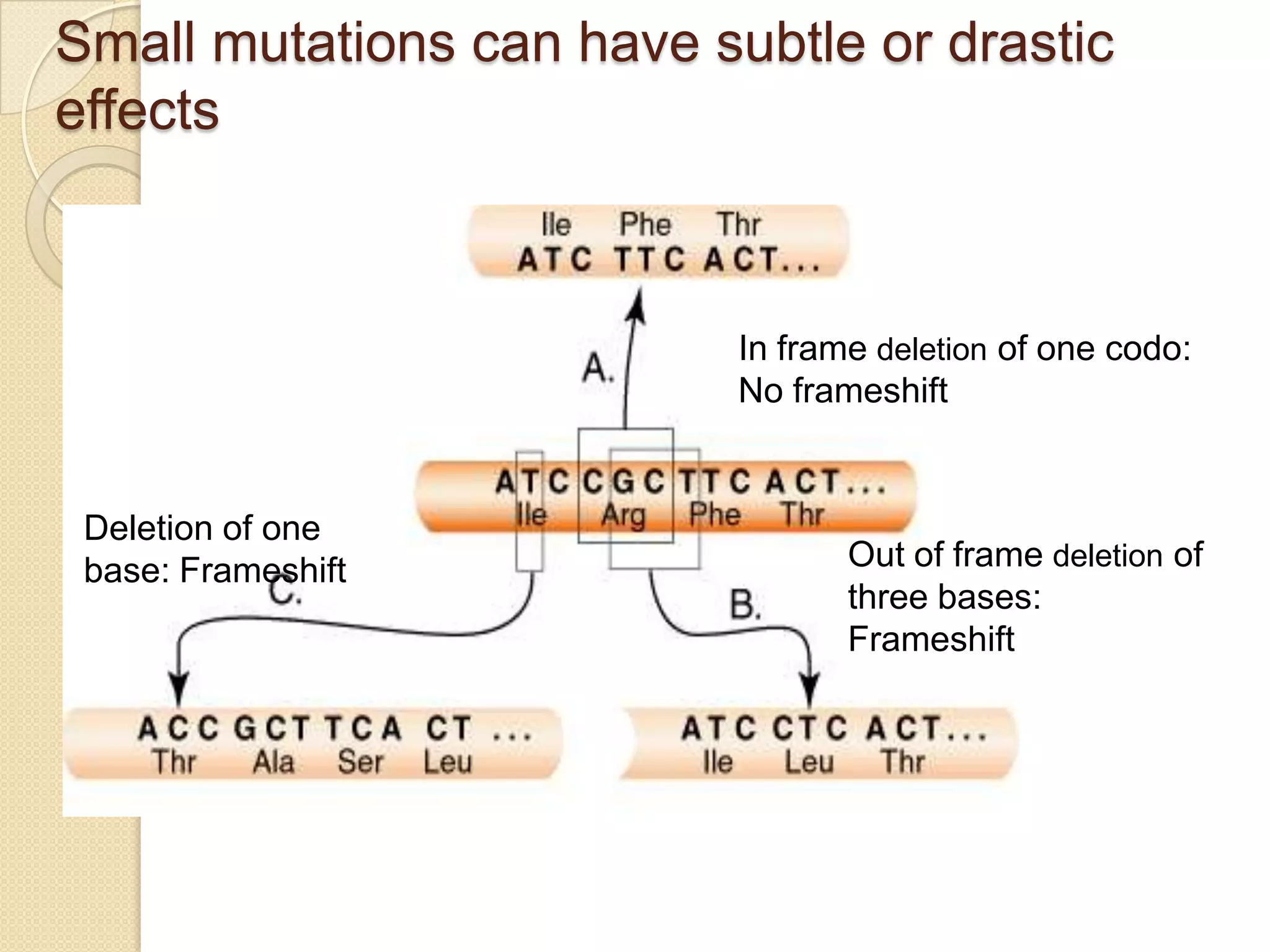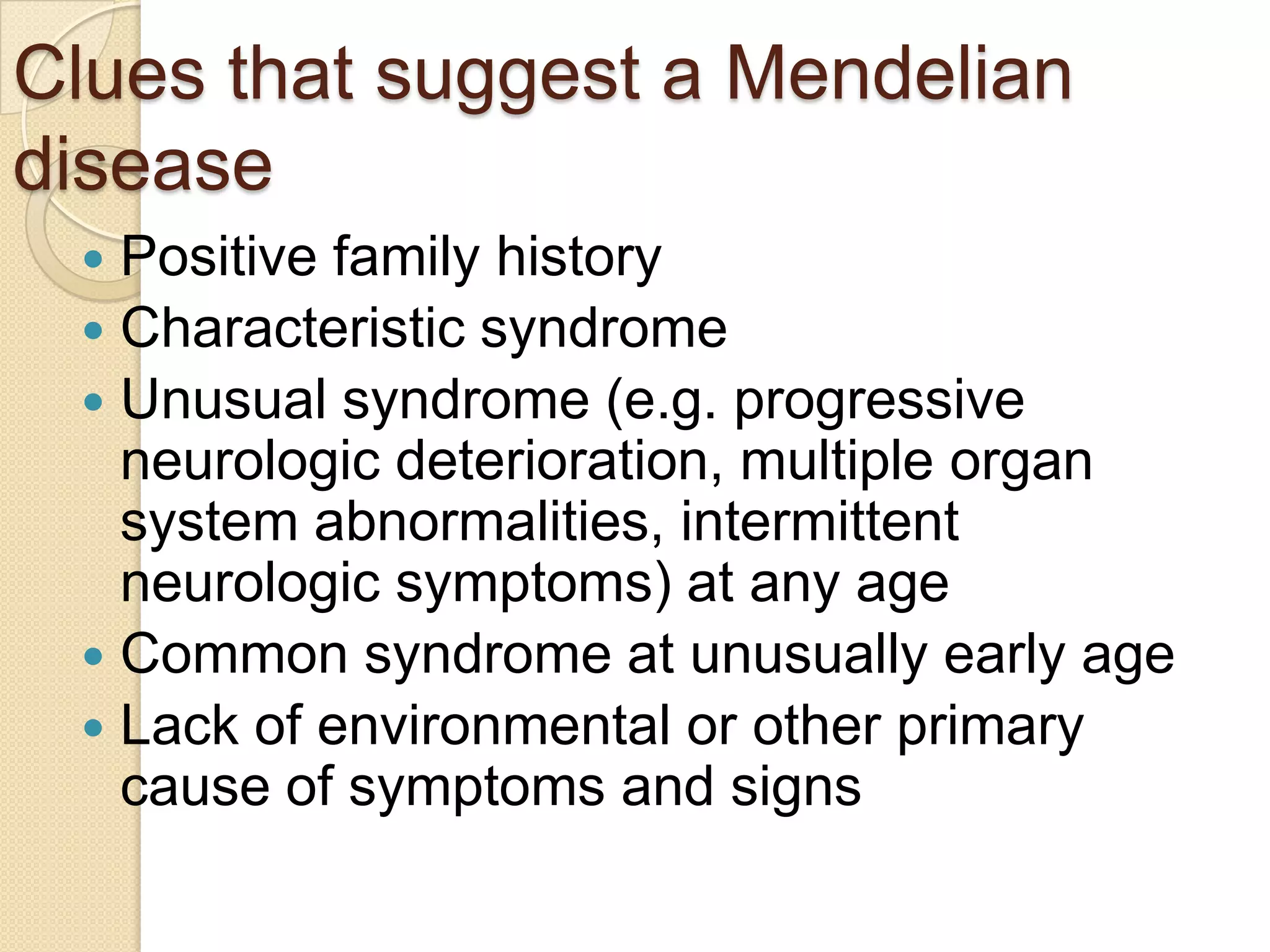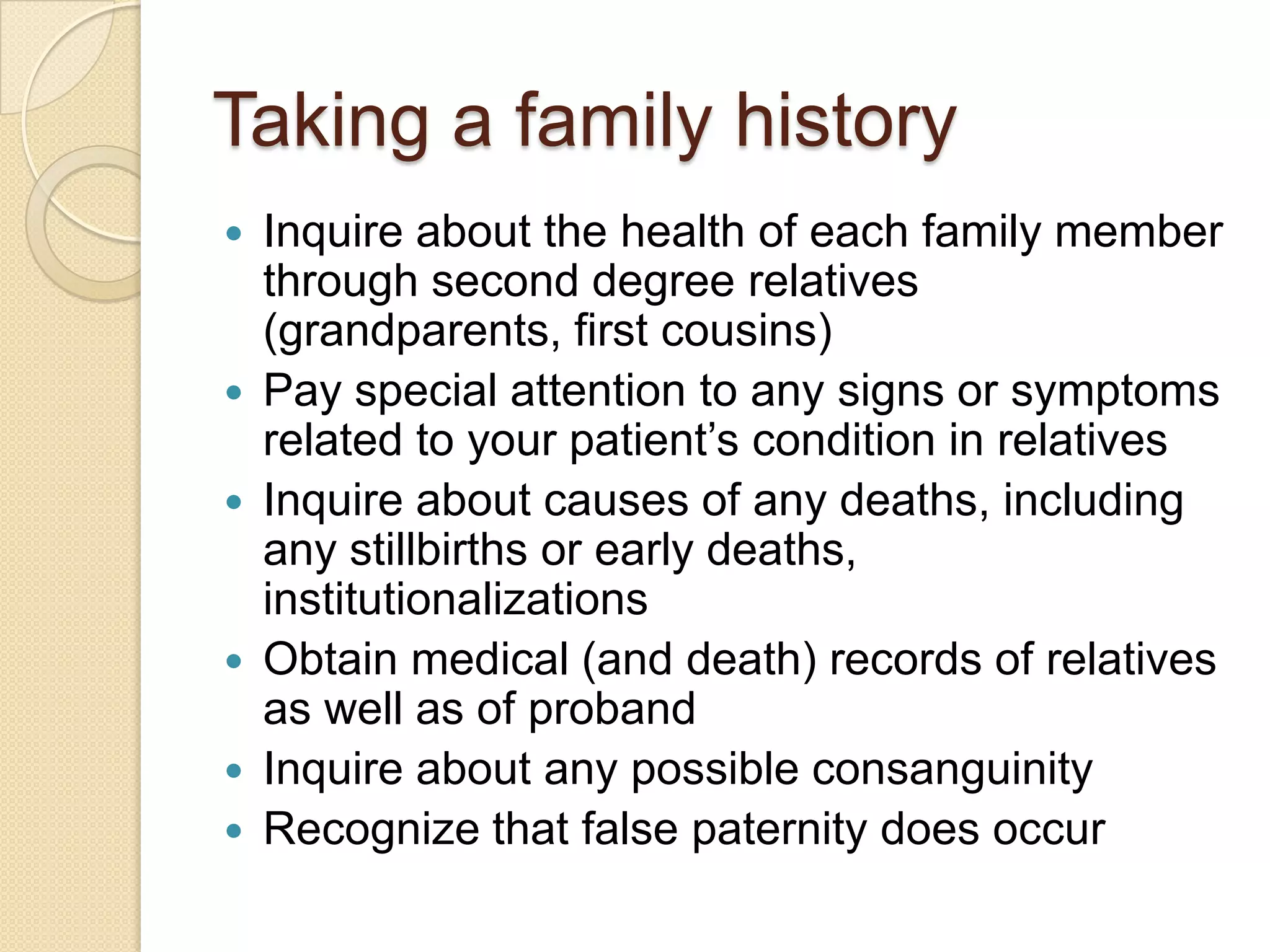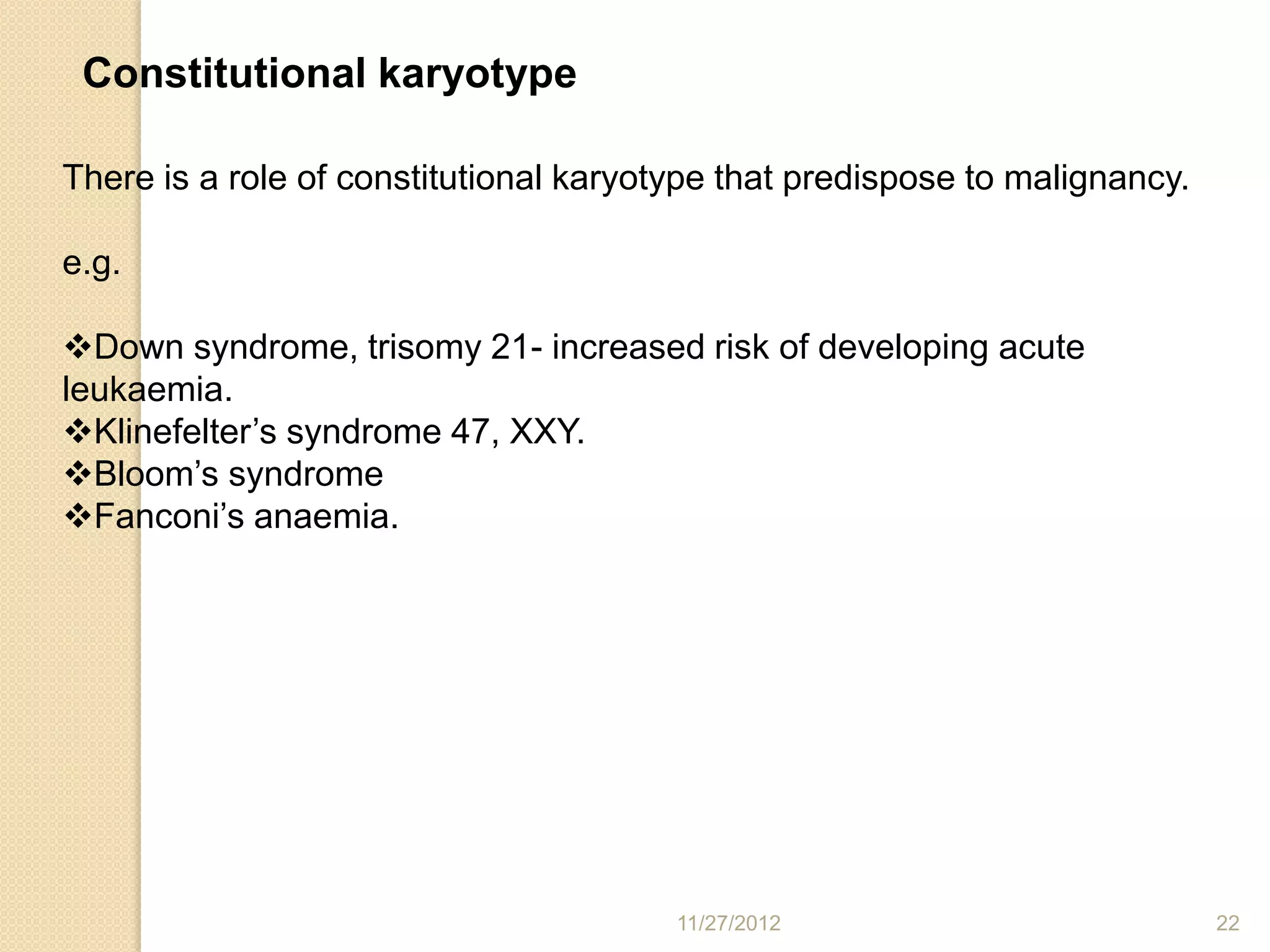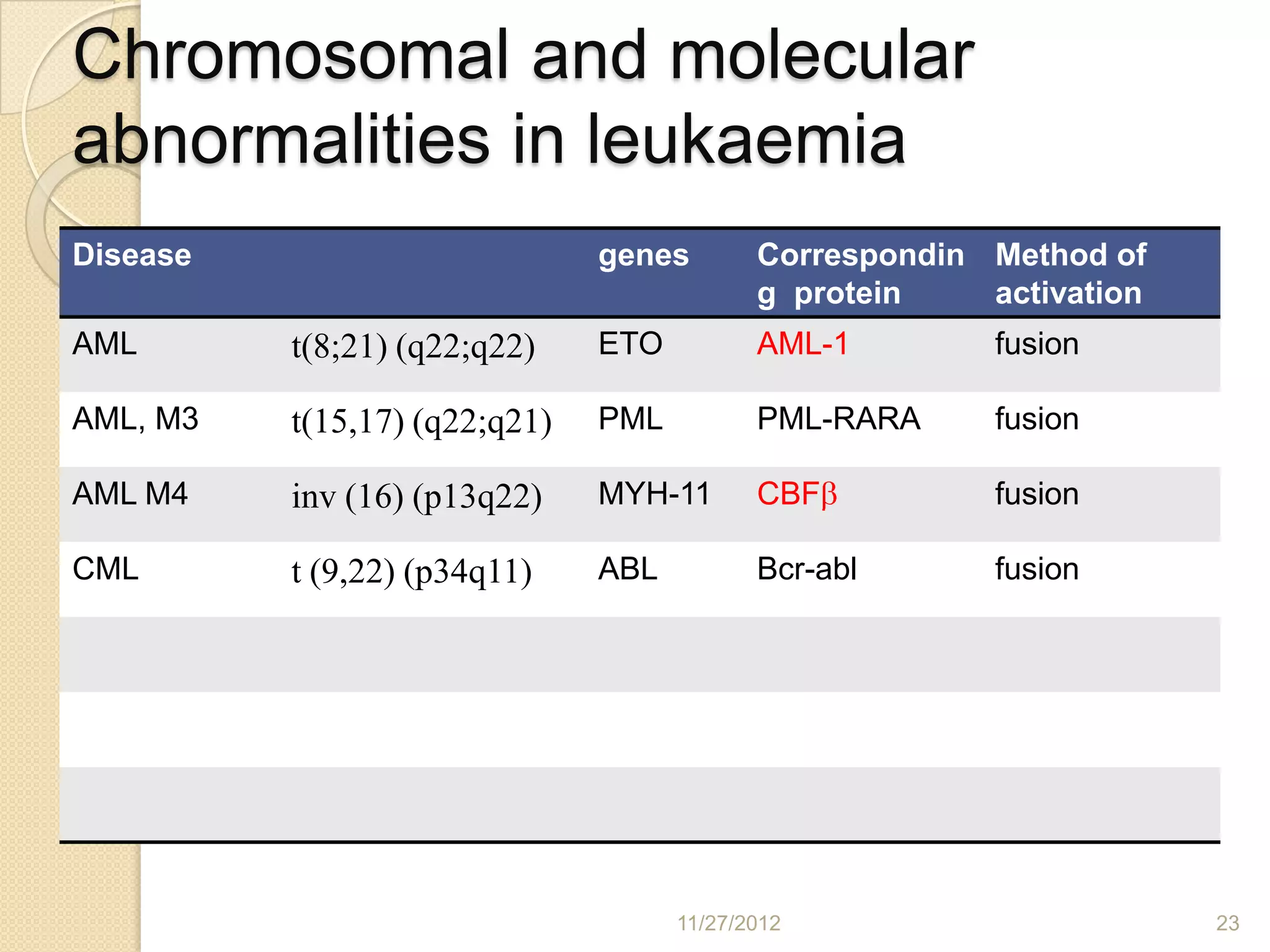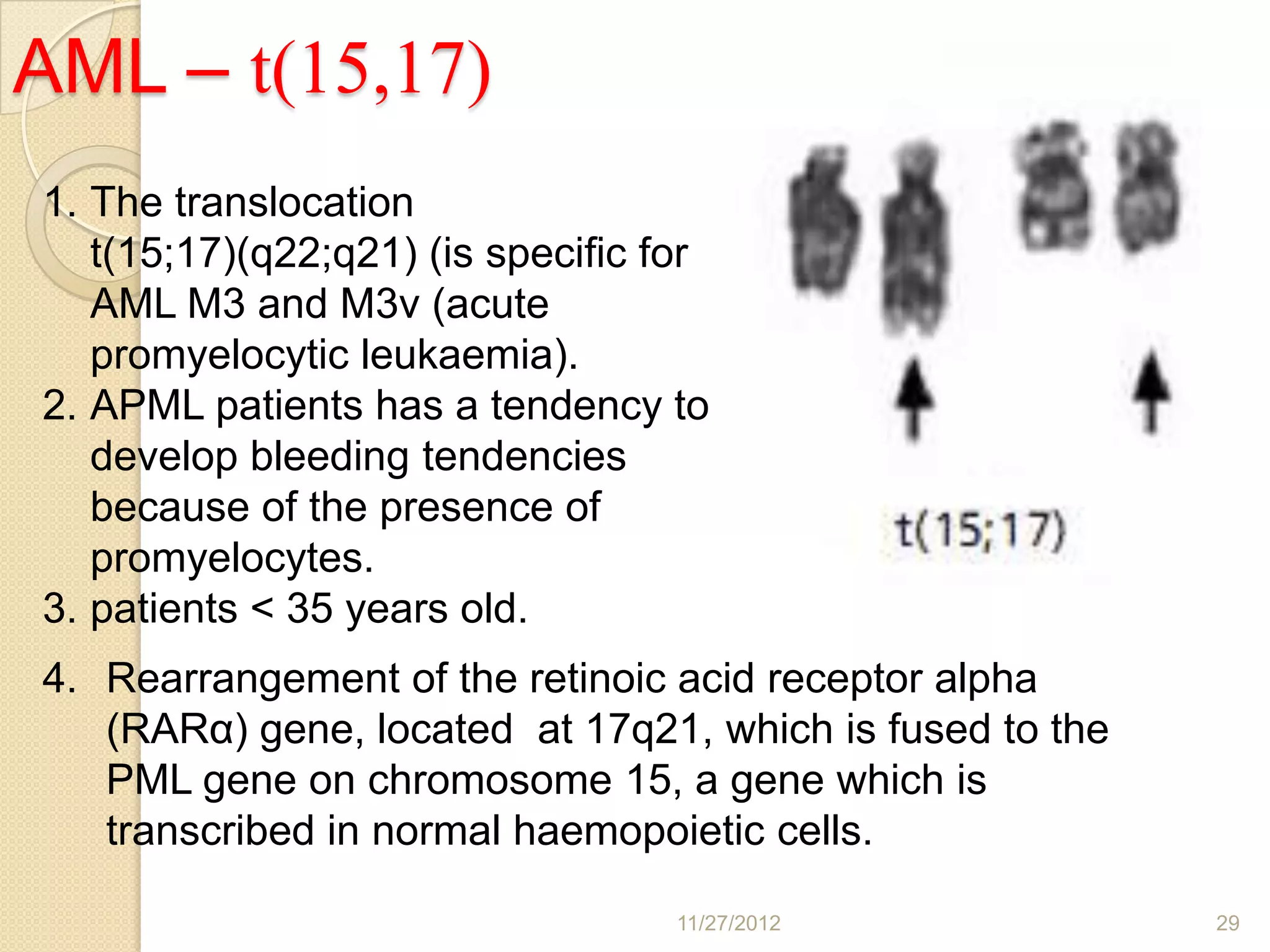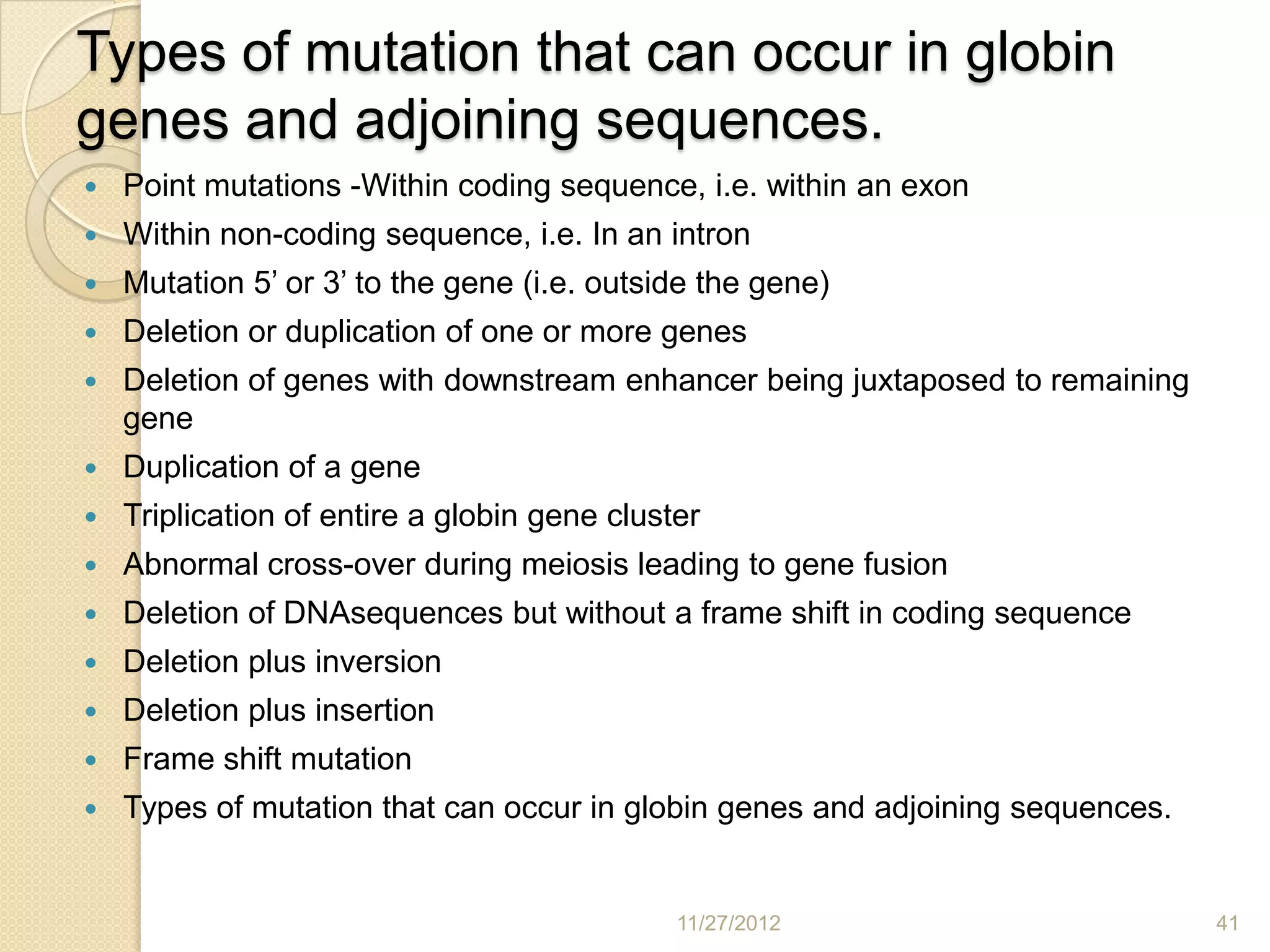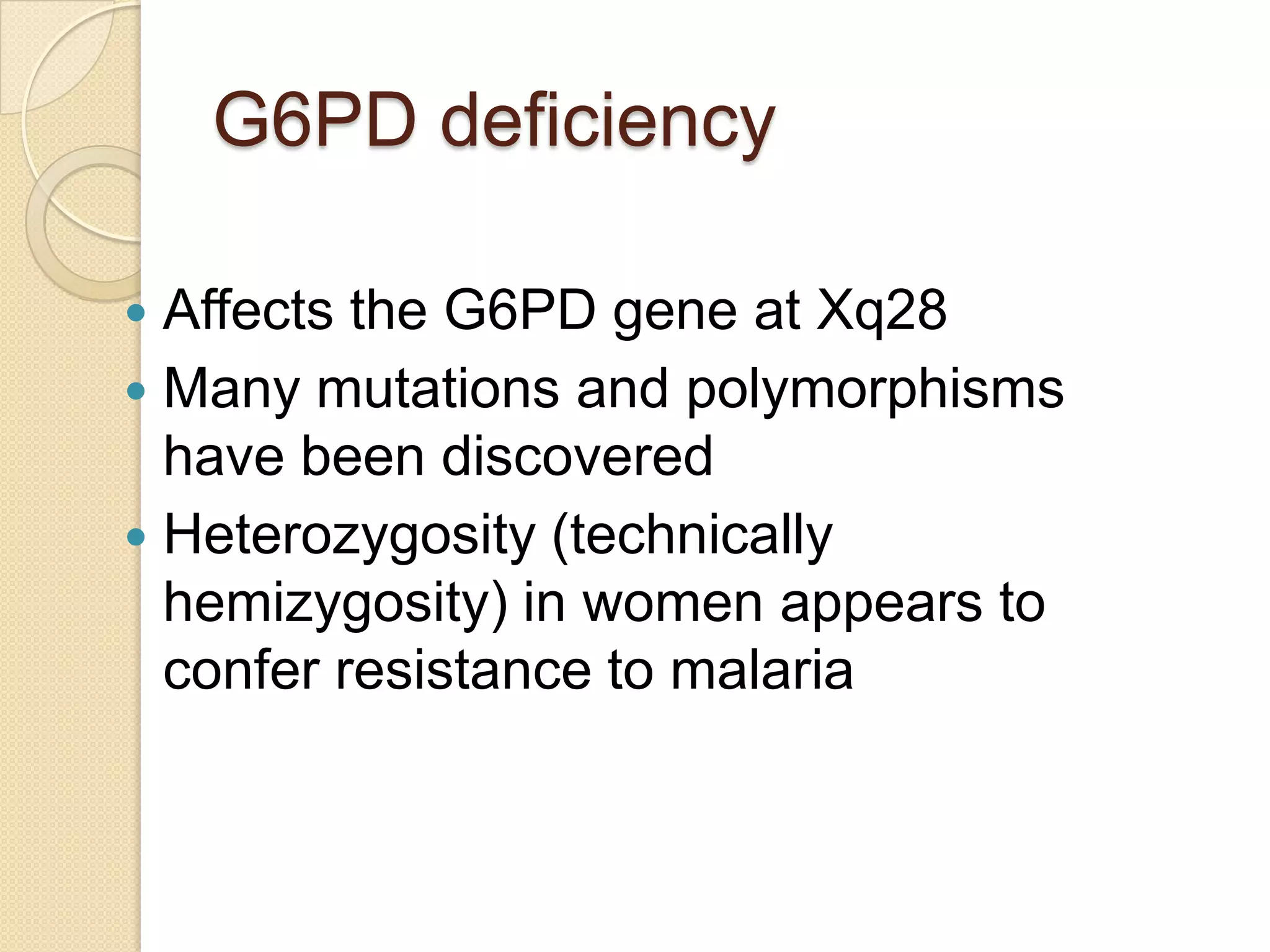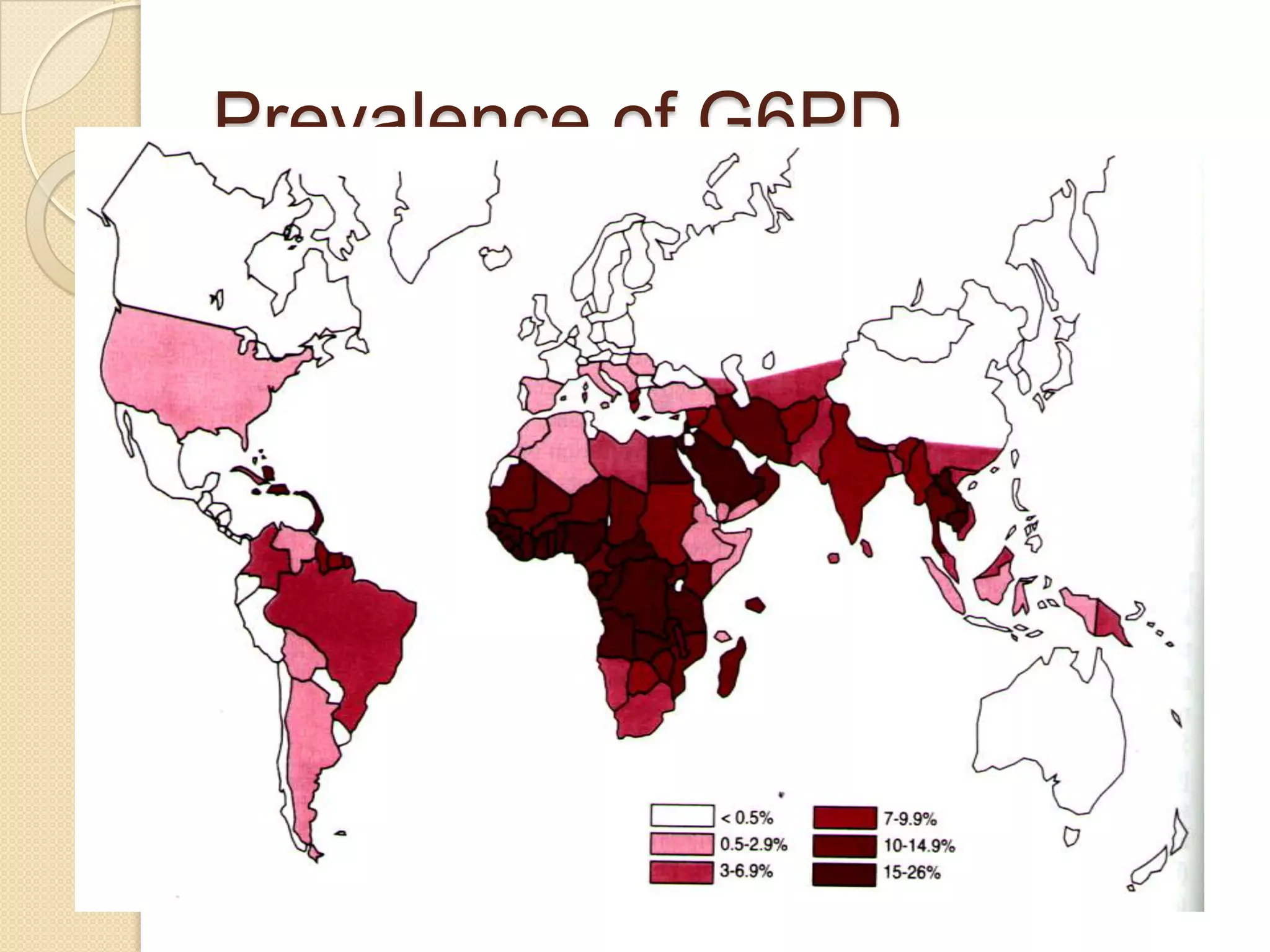This document provides an overview of genetics and genetic abnormalities relevant to hematology. It begins with definitions of key genetic terms. It then discusses chromosomal abnormalities associated with hematological conditions like hemoglobinopathies, leukemias, and bleeding disorders. Specific examples of genetic abnormalities are described, such as translocations in CML and AML. The document outlines various genetic tests used in hematology and stresses the importance of genetic studies in disease classification and management. It emphasizes the role of genetics in understanding inherited hematological diseases.
